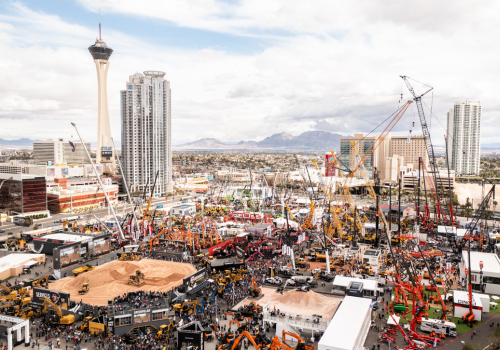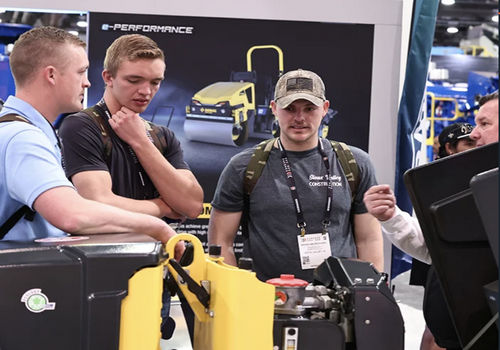From the moment you acquire a piece of equipment to the moment you sell it on the used market, one thing must remain at the center of any life cycle cost analysis.
"You have to know the accurate value of the equipment you are using," says Russ Dolezal, corporate sales specialist with Sandhills Global, an information processing company with a broad footprint in the construction industry.
Construction contractors must also understand annual operating cost. This includes preventive maintenance, repairs and component replacements, as well as costs such as insurance, storage and transportation.
When specifically analyzing the most opportune time to get rid of a piece of equipment, contractors can largely focus on maintenance and repair costs.
While an asset's value steadily declines as it gets older, maintenance/repair costs steadily increase. When you plot both of those measurements on a line graph, the point at which they intersect is known as break-even.
"Break-even is the time to get rid of an asset before you start paying maintenance/repair costs that exceed the value of the equipment itself," says Matt Lang, assistant vice president and account executive at The Bancorp Bank.
Finding that break-even point requires good data — particularly with respect to equipment values. Used equipment values have always been difficult to pinpoint. But in today's era of "big data," it is getting much easier.
Smarter Asset Acquisition Reduces Life Cycle Cost
Many construction contractors look to either purchase equipment or rent it. While renting does offer several benefits, especially when looking to fill short-term needs of six months or less, purchasing offers numerous benefits of its own. The key is making smart purchase decisions.
"Savvy contractors often purchase equipment at auction for a lower price, use it for a few years, and then sell it at retail for just a little bit less than they'd paid for it," Dolezal says. That move alone can dramatically reduce the true life cycle cost of a piece of equipment. Remember: Acquisition Price - Final Resale Price = True Cost.
Dolezal says it is important to use "big data" to determine accurate equipment values. As an example, Dolezal cites the 20-year depreciation rate of a crawler excavator. In looking specifically at years 1-3, the typical crawler excavator depreciates 32 percent. "You'll see a lot of used sales at this point because machines are coming off of lease," Dolezal points out. Then the excavator depreciates another 23 percent from years 3-7. At this point, the excavator has lost more than half of its value, which is why many of the used crawler excavators on the market are 7 years old.
It's important for contractors to understand this type of data for each of the key pieces of equipment they own. Understanding the accurate value of a specific piece of equipment — including brand, model and model year — is central to knowing how to minimize its total life cycle cost. It's also important to know average selling prices in different markets and channels.
As an example, Dolezal cites a popular excavator from model year 2012. In early 2020, that excavator's average retail price was $98,000, but the average auction price was just $78,000. This is how some savvy contractors greatly reduce true life cycle cost by buying at auction and selling at retail a few years later.
Similarly, selling prices can vary by region. For example, a popular telehandler from model year 2015 may hold a $60,000 value in the Central U.S. in January 2020, but that same machine might be selling for just $50,000 in the Southeast. "This is why you'll sometimes see a contractor or dealer that buys equipment in one region and has it shipped to wherever they are located," Dolezal says.
It's all about navigating the used equipment market to minimize total life cycle cost. But even when making the wisest purchasing decisions, there are still some disadvantages of purchasing, Dolezal points out:
- Down payment can tie up capital
- Potential under-utilization
- Maintenance costs
- Depreciation factors
How Leasing Can Improve Life Cycle Cost
Matt Lang of The Bancorp Bank says there are many benefits to both loans and leases. Leases in particular have the potential to positively impact equipment life cycle cost.
There are two primary lease types a construction contractor should understand.
An Operating Lease grants the option of purchasing the equipment at the end of the lease by paying fair market value. Operating Leases also provide lower monthly payments because the equipment still has some residual value at the end of the lease. Operating leases are also carried off balance sheet, so payments are simply reported as expenses on a profit and loss statement.
A Capital Lease also grants the option of buying the equipment at the end of the lease term, only this time a nominal price is used, often $1 or 10 percent of purchase price. As a result, this type of lease typically has higher monthly payments. A Capital Lease is also carried on a balance sheet as an asset.
There are some unique characteristics of a Capital Lease:
- Lease term must be at least 75 percent of the asset life
- Lease must contain a purchase price that is less than market value
- Value of all lease payments must be at least 90 percent of the asset's value
"If any of those characteristics are not met, the lease automatically becomes an Operating Lease," Lang points out.
Regardless of which type of lease a contractor ends up using, Lang says there are cost advantages to be had. Remember that important formula mentioned earlier: Acquisition Price - Final Resale Price = True Cost.
"A lease enables a contractor to only pay for the true cost of a piece of equipment," Lang explains. "The contractor can finance the acquisition price, and then set the resale price as the residual value or the balloon payment. This way, payments over the term allow the contractor to only pay for the use of the asset for however long the asset is being used. Contractors can structure the lease so they are only taking on the true cost they are incurring."
Leases offer additional benefits:
- Often don't have to put money down
- Terms often spread over multiple budget years
- Frees up capital for other uses
- Streamlined fleet administration
- Controlled maintenance costs
This is where break-even point and lease terms converge.
"Before acquiring a piece of equipment, work with someone to figure out future values for that specific piece of equipment," Lang says. "Then you can work out a lease structure that uses the break-even point as the end point of the lease. All of this data must be very specific to the asset you are analyzing."
In today's era of "big data," it's getting easier for contractors to do this more accurately and efficiently than ever.
This article was based on a presentation given at CONEXPO-CON/AGG 2020 by Russ Dolezal and Matt Lang. Dolezal is a corporate sales specialist with Sandhills Global, an information processing company whose brands include Machinery Trader and AuctionTime. Dolezal works in research and development with finance companies, OEMs, dealers and municipalities by focusing on a data-driven approach to help value and sell assets to maximize ROI. Visit sandhills.com for more information. Lang is assistant vice president and account executive at The Bancorp Bank. He has a demonstrated history of working in the banking industry with particular expertise in commercial lending and financial analysis. Visit thebancorp.com for more information.












